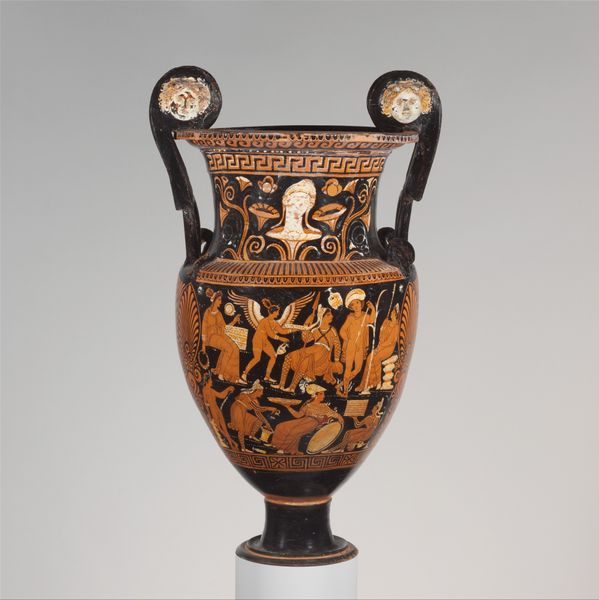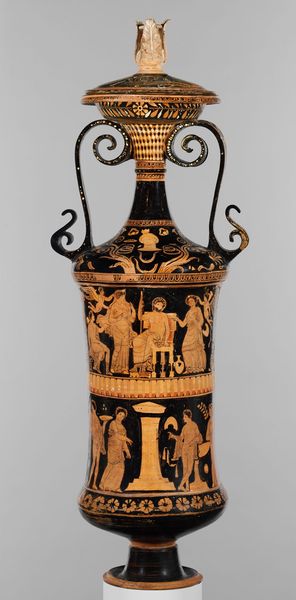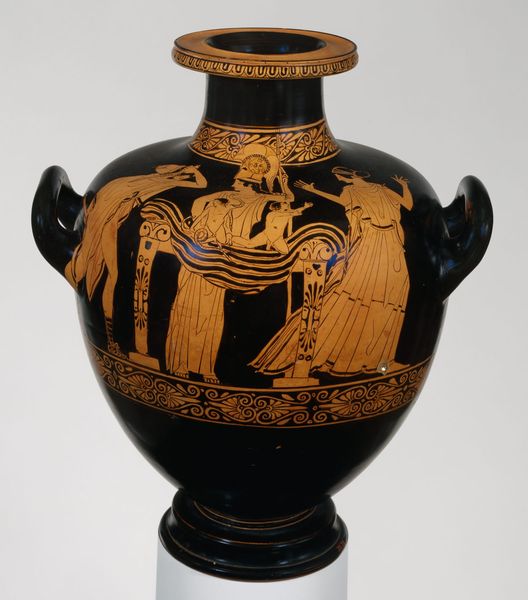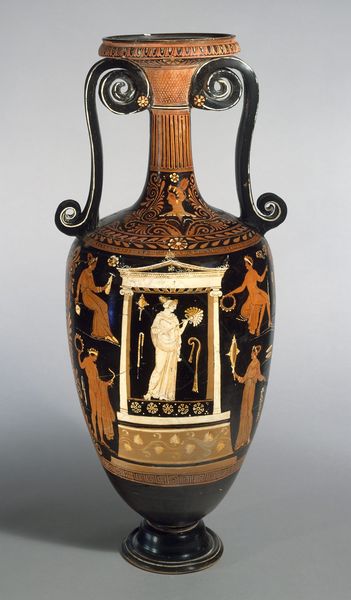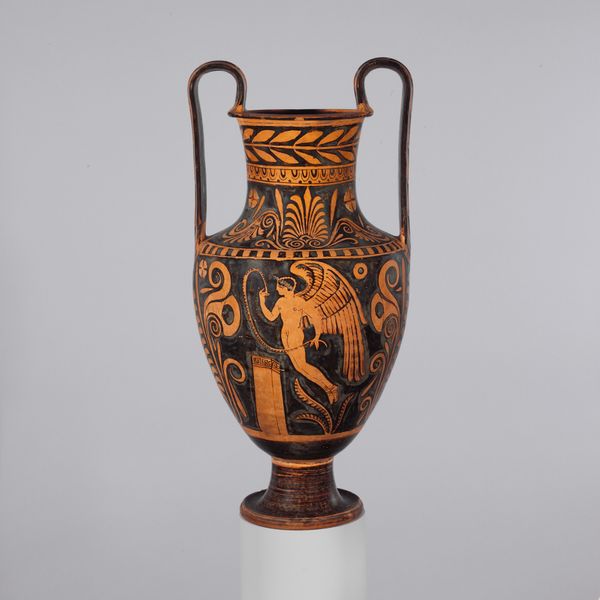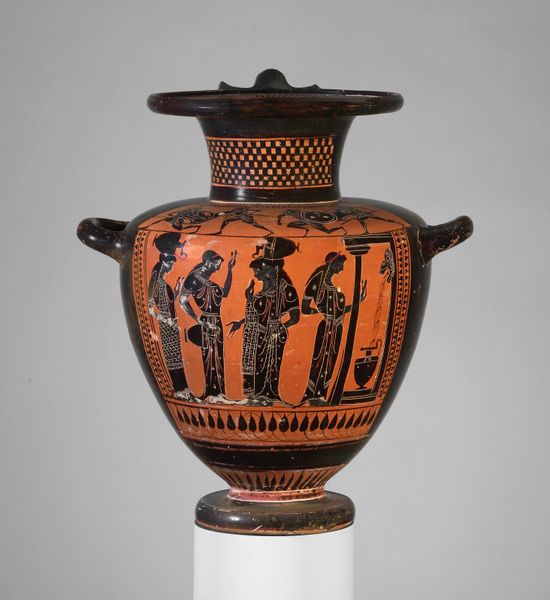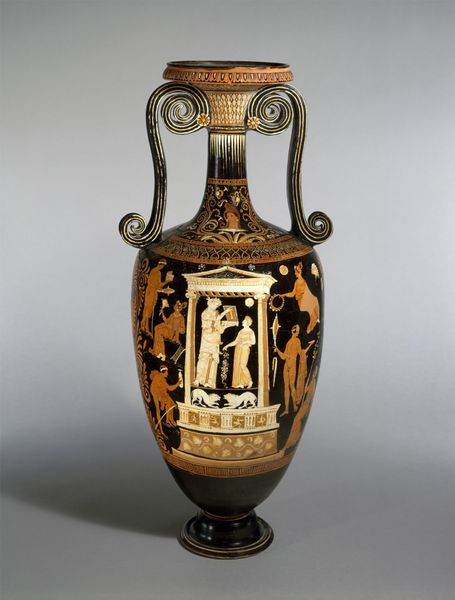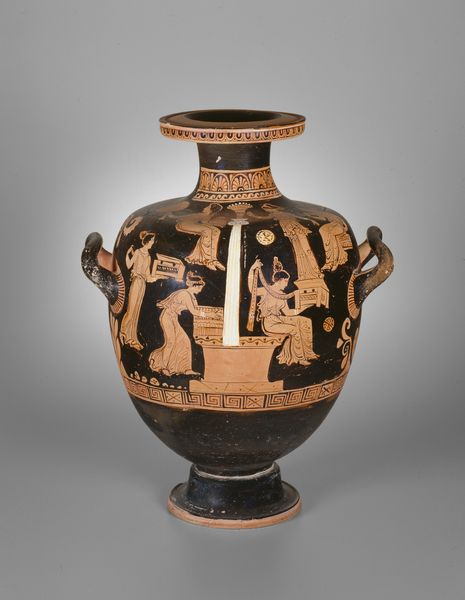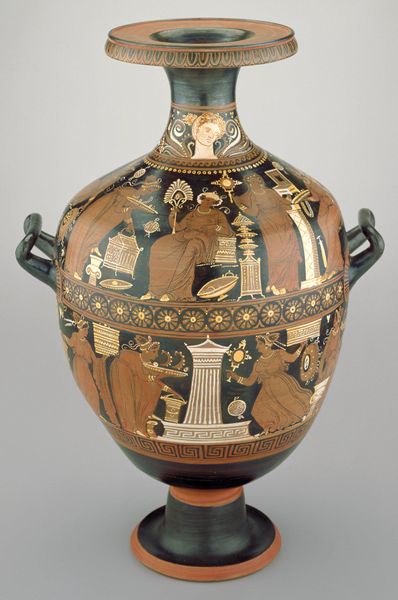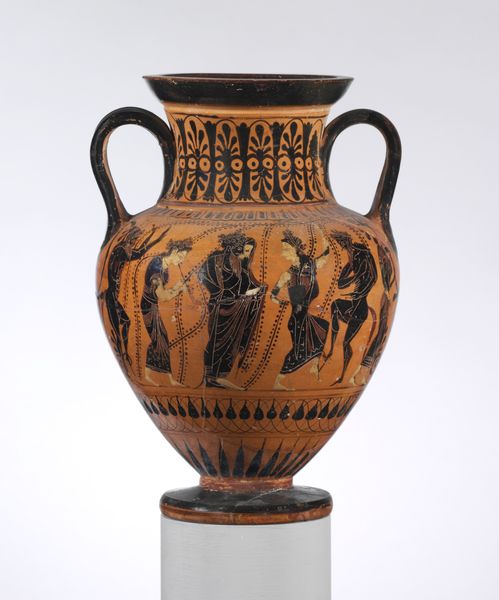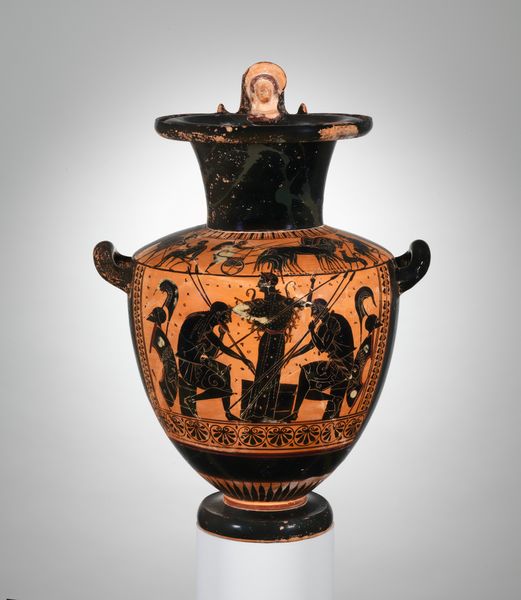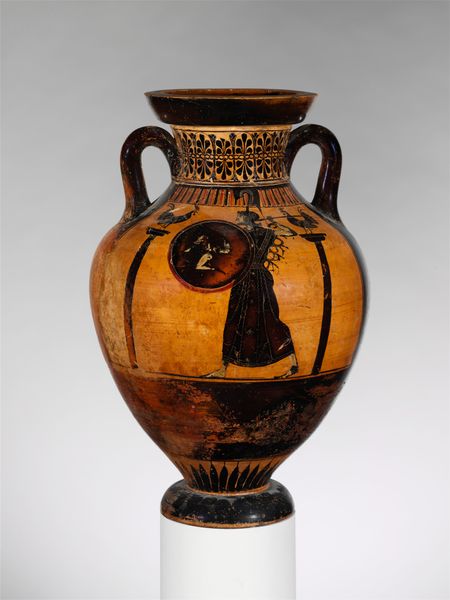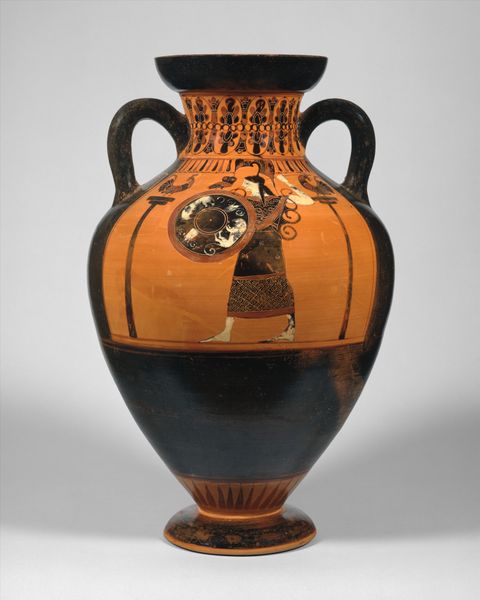
ceramic, earthenware
#
pottery
#
greek-and-roman-art
#
landscape
#
ceramic
#
figuration
#
earthenware
#
ceramic
#
earthenware
#
history-painting
#
decorative-art
Copyright: Public domain
This terracotta volute krater, or mixing bowl, was crafted in ancient Greece, sometime between the 9th and 1st centuries BCE. The imagery we see here speaks to the valued place of ritual and theater in civic life. Greek pottery like this provides a window into the aesthetics, beliefs, and social structures of the time. The red-figure technique, with its emphasis on detail and narrative, allowed for the depiction of mythological scenes, religious ceremonies, and daily life. The krater itself would have been used in symposia, gatherings of men for drinking, conversation, and entertainment. These events were vital for forging social bonds and shaping political discourse. The depiction of figures in theatrical settings, combined with the vessel’s function, suggests a society deeply engaged with performance, spectacle, and collective identity. The krater wasn’t just a vessel, it was a stage for social interaction. To understand its full significance, we might look at archaeological reports, social histories of ancient Greece, and studies of Greek theater and performance. This is how we can reconstruct the cultural and institutional contexts that gave rise to such objects.
Comments
No comments
Be the first to comment and join the conversation on the ultimate creative platform.
